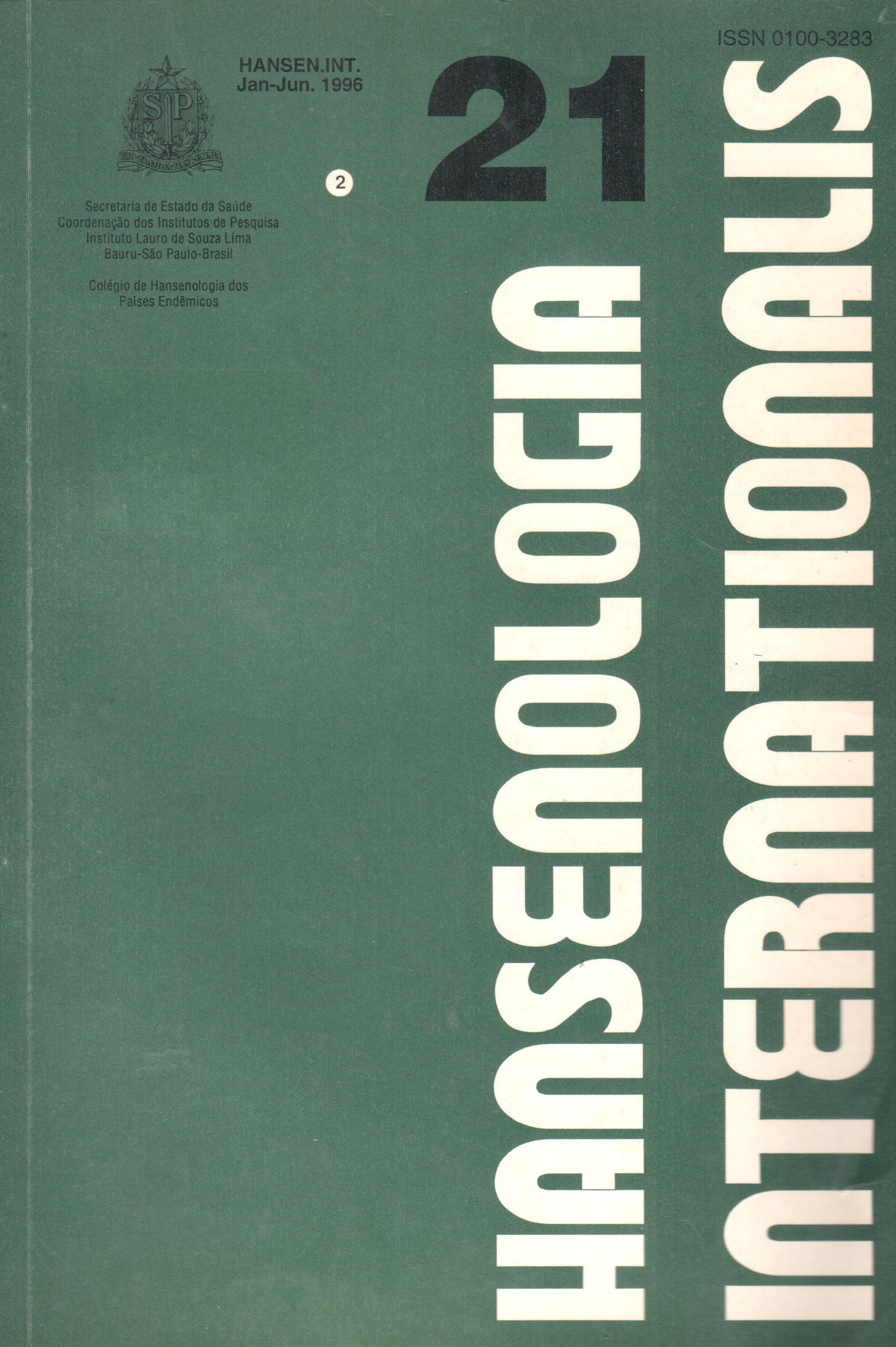Abstract
The main consequence of a incorrect operacional classification refers to MB patients when they are classified as PB. This work aims to study the applicability of the warmings of the National Coordinnation of Sanitary Dermatology of de Ministry of Health (CNDS/MS) in what it is related to proceedings of de operational classification, comparing firstly to proceedings made by the National Institute of Sanitary Dermatology (IEDS) (Reference Center) as it is recommended by CNDS/MS. It follows that the classification which is done by IEDS, know as golden pattern, with two
different health service of the country and at last, it compares the procedings of CNDS/MS whit those ones done by the technicians of health in the State of São Paulo. This last comparison had been done to show the adherence grade of the health services in the State of São Paulo with the
proceedings which are recommended by CNDS/MS. The disagreement between the classification of the IEDS and the recommended one by CNDS/MS is 3,5% related to dimorphos and indeterminate cases. If the result of baciloscopy were the only criterion of allocation, 20% of the MB would be classified and treated as MB. If the Mitsuda test was used as isolated criterion of the 19% MB they would be classified and treated as PB. Among PB, 10% would be treated as MB. The comparison of the classification in the State de São Paulo versus CNDS has demonstrated an accordance of 95%. The results show that the recommendations of CNDS/MS are a classification method to cases that do not need a great variety of goods, ellabo rated technicques which allow to the prossional to decide trusthfullyin patients ar MB and or PB, besides being able to be applicable in a great net of public health services.
References
2. BARRY, M. J ; MULLER, A.G. ; SINGER, D.E. Screnning for HTLV Ill antibodies: the relation between prevalence and positive predictive value and its social consequences. JAMA, 253:3395. 1985.
03. BECX-BLEUMINK, M. Allocation of patients to paucibacillary or multibacillary drug regimens for the treatment of leprosy - A comparison of methods based mainly on skins smears as opposed to clinical methods for classification of patients. Int. J.Leprosy, 59:292-303. 1991.
04. BRASIL. Ministério da Saúde Secretaria Nacional de Ações Básicas de Saúde / Divisão Nacional de Dermatologia Sanitária). Normas Técnicas e
Procedimentos para utilização dos esquemas de Poliquimioterapia no tratamento da Hanseniase. Brasília, Centro de Documentação do Ministério da Saúde. 1992. 73p.
5. BRASIL. Ministério da Saúde. Fundacão Nacional de Saude. Centro Nacional de Epidemiologia. Coordenacao Nacional de Dermatologia Sanitária.
Relatório de Supervisao Técnica. 1993.
6. BRASIL. Ministério da Saúde. Fundação Nacional de Saúde. Centro Nacional de Epidemiologia. Coordenação Nacional de Dermatologia Sanitária.
Relatório da Reunião do Comite Técnico Assessor da Coordenação Nacional de Dermatologia Sanitária. maio-Brasilia, 1994. 71p.
7. BRASIL. Ministério da Saúde. Fundacão Nacional de Saude. Centro Nacional de Epidemiologia. Coordenação Nacional de Dermatologia Sanitária.
Relatório do Ministério da Saúde. Plano de eliminação da hansen fase no Brasil para o período de1995/2000 - Brasilia, 1995. 11p.
8. BRASIL. Ministério da Saúde. Fundação Nacional de Saúde. Centro Nacional de Epidemiologia. Coordenação Nacional de Dermatologia Sanitária.
Informações epide-miológicas e operacionais do programa nacional de controle e eliminação da hanseníase no Brasil. Brasilia, 1995. 37p.
9. FLEISS, J.L. Statitiscal Methods for Rates and Proportions. New York: Willey, 1973.
10. FLETCHER, R.H.; FLETCHER, S.W.; WAGNER, E.H. Clinical Epidemiology: the essentials. Baltimore, Maryland, Williams and Wilkins, 1998.
11. GEORGIEV, G.D. & McDOUGALL, A.C. A reappraisal of clinical and bacteriological criteria in the implementation of multidrug therapyfor leprosy control programmes and proposals for their better use. Leprosy Review, 61:64-72, 1990.
12. GUINTO, R.S. et al. An Atlas of Leprosy. Sasakawa Memorial Health Foundation. 13.13, 1990
13. HUNTSBERGER, D.V.; LEAVERTON, P.E. Statistical inference in the biomedical sciences. Boston, Allyn and Bacon, 1970.
14. ROTBERG, A. Valor prognóstico da leprominoreagdo de Mitsuda:observagdo de 445 casos durante 5-6 anos. Rev. Bras. LeproL, 12:367-377, 1944.
15. SACKETT, D.L.; HAYNES, R.B.; TUGWELL, P. Clinical Epidemiology. A Basis Science for Clinical Medicine. Boston, Little, Brown and Co, 1985.
16. SENTIS, J.; ASCASO, C.; VALLES, A.; CANELA, J. Licenciatura: bioestadistica. Serie manuales basicos para licenciatura y residencia. Ediciones cientificas y tecnicas, S.A. Ed. Masson-Salvat Medicina. Barcelona, 1992. 301 p.
17. TAKAHASHI , M. D. ; ANDRADE, H.F. J r . ; WA K AMA T S U, A . S . ; THA LE S De B . S . Indeterminate leprosy: Histopatholoic and histochemical predictive parameters involved in its possible change to paucibacillary or multibacillary leprosy. Int. J.Leprosy, 59:12-19, 1991.
18. YOUDEN WJ . Index for rating diagnostic tests. Cancer , 3:32-35, 1950.
19. VETTOM, L.; PRITZE, S. Reliability of skin smears results: experience with quality control of skin smears in different routine services in leprosy
control programmes. Leprosy Rev., 60:187-196, 1989.
20. WHO - STUDY GROUP. Chemotherapy of leprosy for control programmes. WHO Tec.Rep.Ser.675, 1982.

This work is licensed under a Creative Commons Attribution 4.0 International License.
